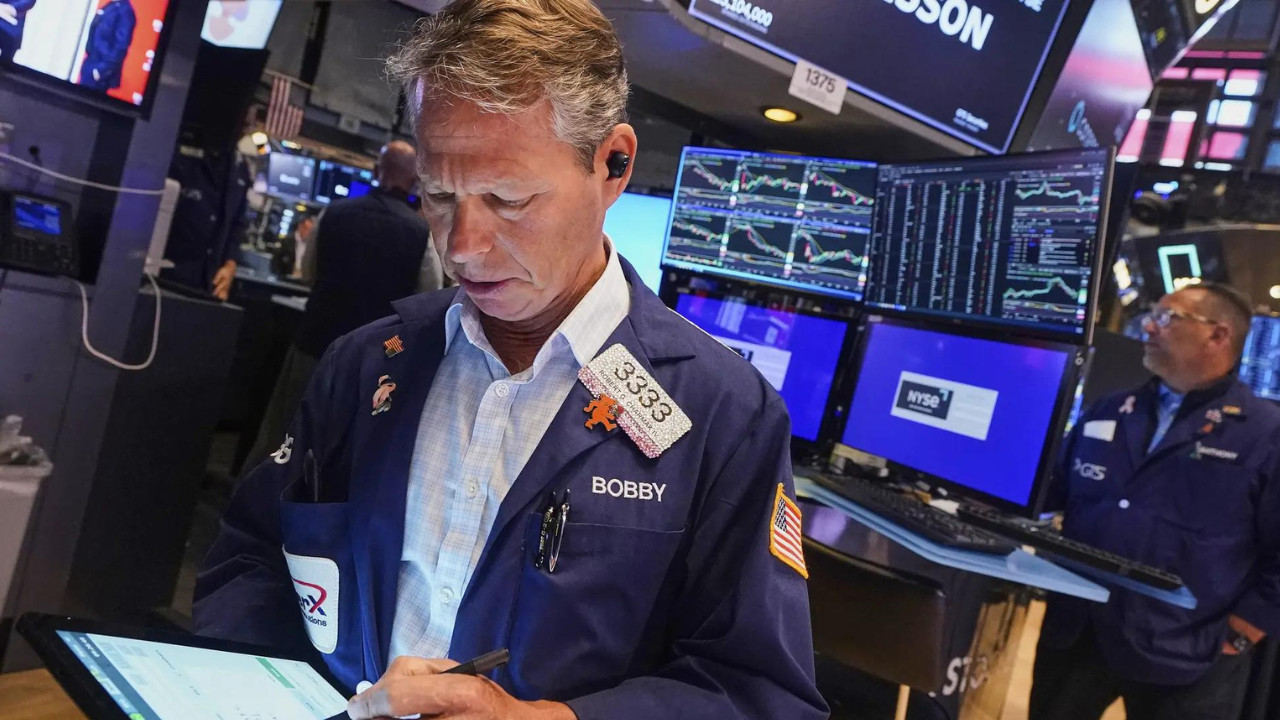Wall Street saw slight gains Friday, with the S&P 500 and Nasdaq near record highs, as investors anticipated a busy week of earnings, data, and trade deadlines. Intel’s disappointing earnings contrasted with rallies from Deckers and Boston Beer. Markets are closely watching Trump’s trade negotiations and the upcoming Federal Reserve policy meeting for further direction.
Is AI’s Momentum Faltering on Wall Street? A Market Reality Check
Wall Street, that restless beast of finance, has been on a rollercoaster lately, and the ride’s getting a little bumpy. The relentless surge powered by artificial intelligence (AI) seems to be taking a breather, leaving investors wondering if the AI party is slowing down or just shifting gears. Recent trading sessions paint a picture of a market grappling with mixed signals, where exuberance meets the cold hard reality of economic data and quarterly earnings.
The Dow Jones Industrial Average, that bellwether of established companies, experienced a modest dip, while the S&P 500, a broader reflection of the market’s overall health, showed a similar, albeit slight, downward trend. The tech-heavy Nasdaq, which has been practically synonymous with the AI boom, also showed signs of fatigue. But what’s behind this potential shift?
Decoding the Market’s Mixed Signals
Several factors are converging to create this air of uncertainty. One key element is the recent batch of economic data. While some indicators suggest a resilient economy, others are flashing warning signs about potential inflation and interest rate hikes. This tug-of-war between growth and caution makes it difficult for investors to confidently predict the market’s next move. High interest rates and inflation concerns can take the wind out of even the most promising sectors.
Speaking of promising sectors, let’s talk about AI stocks. For months, companies even tangentially related to AI have enjoyed a meteoric rise. Nvidia, the darling of the AI hardware world, has led the charge, but even its stock has experienced moments of turbulence. The question now is whether these valuations are sustainable. Is the hype justified by actual earnings and future potential, or are we seeing a classic case of market exuberance outpacing fundamental value?

Another major player in the tech landscape, Intel, recently reported its quarterly earnings. While their performance showed areas of improvement, the overall picture wasn’t enough to reignite a broad AI rally. This highlights a crucial point: the AI revolution is not a uniform wave lifting all boats equally. Individual companies will need to demonstrate tangible results to justify the lofty expectations placed upon them.
Beyond the Hype: The Importance of Fundamentals
The current market climate emphasizes the importance of a balanced investment strategy. While the potential of AI is undeniable, it’s crucial to remember that investing based solely on hype can be a risky proposition. Diversification, a thorough understanding of individual company financials, and a long-term perspective are essential for navigating these uncertain waters. It’s a stark reminder that not all that glitters is gold, especially in the fast-paced world of technology.
For investors looking for more stable opportunities, exploring areas such as dividend-paying stocks or value-oriented investments could be a prudent approach during this period of recalibration. See our previous article on [diversifying your investment portfolio](internal-link-to-diversification-article) for more ideas.
Will the AI Boom Reignite?
The future of AI on Wall Street remains an open question. The underlying technology is undoubtedly transformative, but its impact on individual companies and the overall market will depend on a multitude of factors, including technological advancements, regulatory developments, and, of course, the overall economic environment. The recent market activity serves as a reminder that even the most promising trends can be subject to correction and reassessment. The momentum of AI stocks, while still significant, appears to be tempered by a more cautious and discerning approach from investors.
In conclusion, while the AI revolution is far from over, Wall Street is sending a clear signal: the days of unquestioning exuberance may be behind us. A more nuanced and data-driven approach is essential for navigating the evolving landscape of artificial intelligence and its impact on the financial markets. The next phase will likely be defined by which companies can translate the promise of AI into tangible profits and sustainable growth, rather than simply riding the wave of hype.







